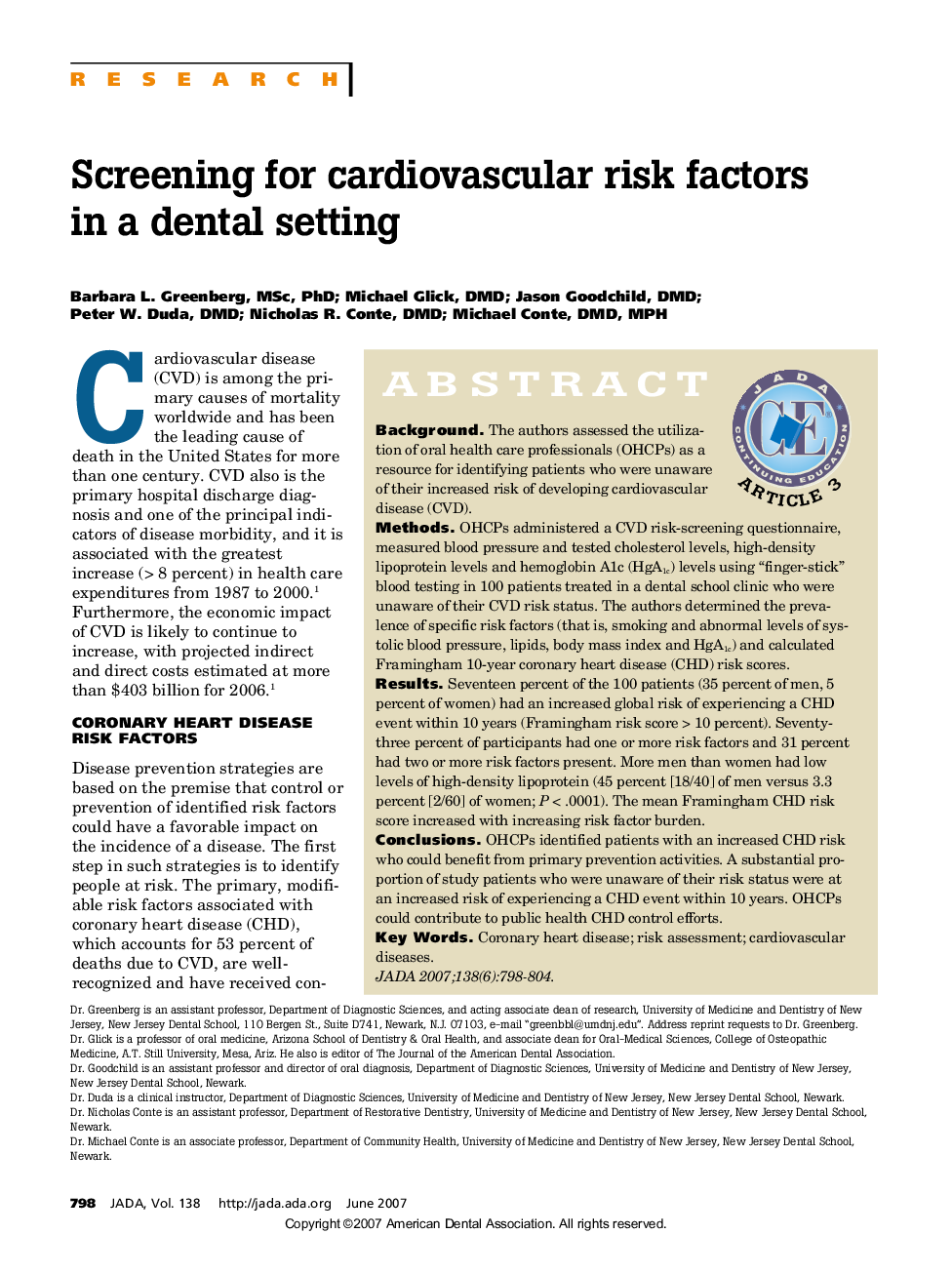| Article ID | Journal | Published Year | Pages | File Type |
|---|---|---|---|---|
| 3140469 | The Journal of the American Dental Association | 2007 | 7 Pages |
ABSTRACT BackgroundThe authors assessed the utilization of oral health care professionals (OHCPs) as a resource for identifying patients who were unaware of their increased risk of developing cardiovascular disease (CVD).MethodsOHCPs administered a CVD risk-screening questionnaire, measured blood pressure and tested cholesterol levels, high-density lipoprotein levels and hemoglobin A1c (HgA1c) levels using “finger-stick” blood testing in 100 patients treated in a dental school clinic who were unaware of their CVD risk status. The authors determined the prevalence of specific risk factors (that is, smoking and abnormal levels of systolic blood pressure, lipids, body mass index and HgA1c) and calculated Framingham 10-year coronary heart disease (CHD) risk scores.ResultsSeventeen percent of the 100 patients (35 percent of men, 5 percent of women) had an increased global risk of experiencing a CHD event within 10 years (Framingham risk score > 10 percent). Seventy-three percent of participants had one or more risk factors and 31 percent had two or more risk factors present. More men than women had low levels of high-density lipoprotein (45 percent [18/40] of men versus 3.3 percent [2/60] of women; P < .0001). The mean Framingham CHD risk score increased with increasing risk factor burden.ConclusionsOHCPs identified patients with an increased CHD risk who could benefit from primary prevention activities. A substantial proportion of study patients who were unaware of their risk status were at an increased risk of experiencing a CHD event within 10 years. OHCPs could contribute to public health CHD control efforts.
